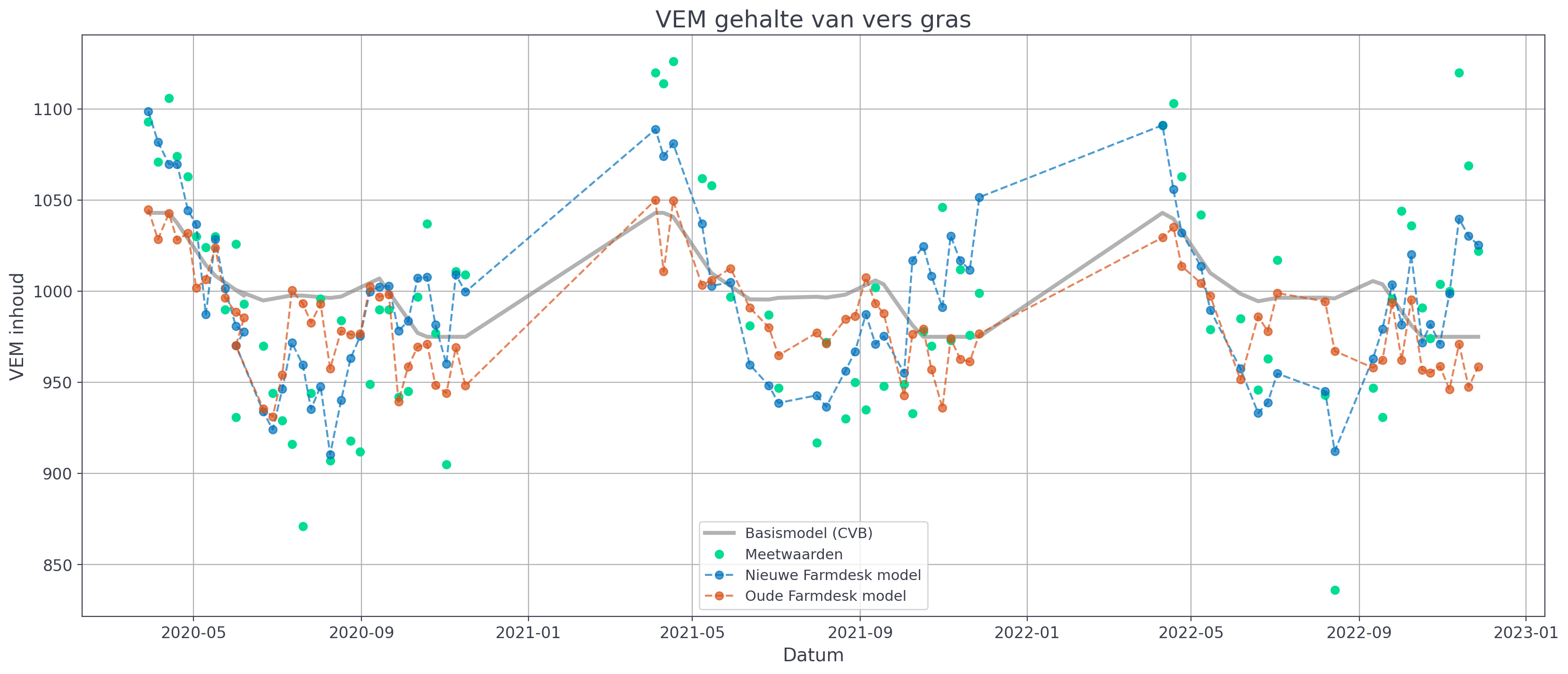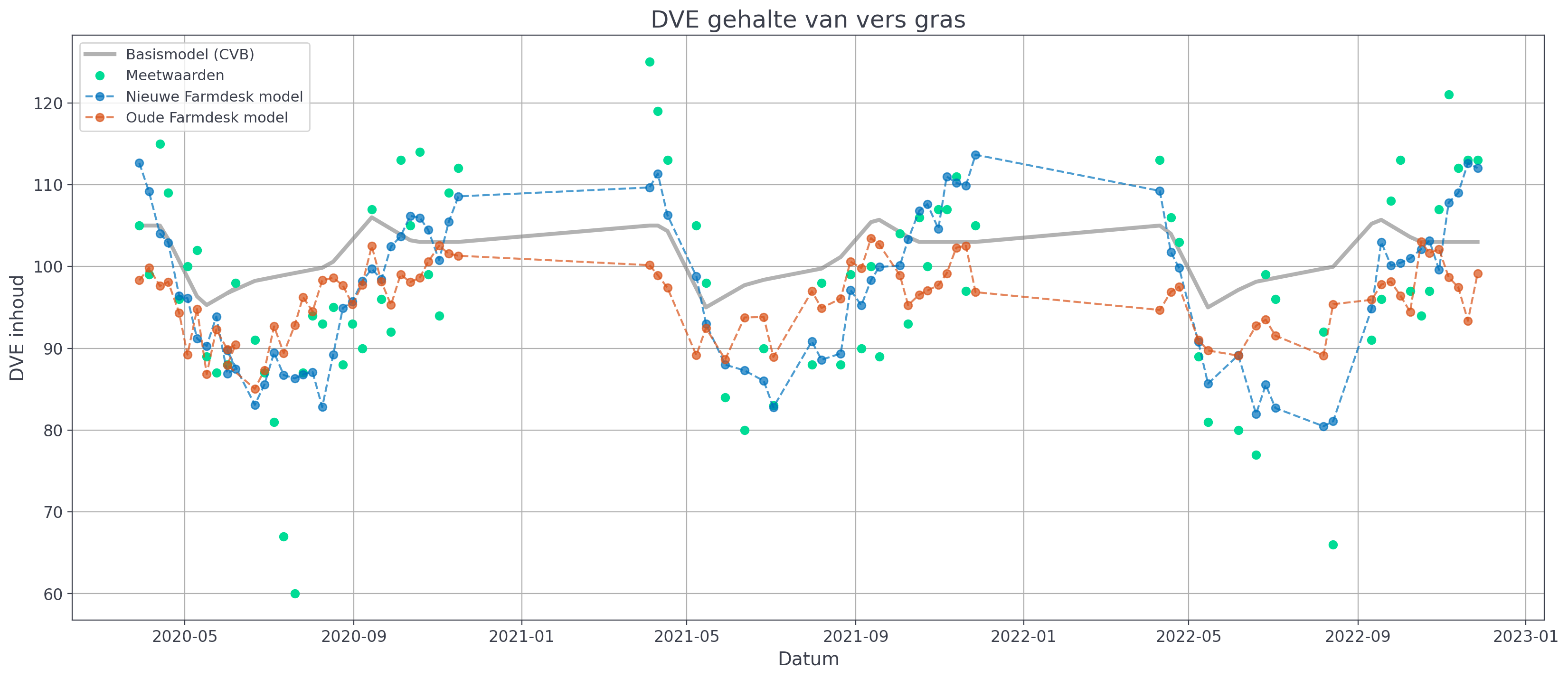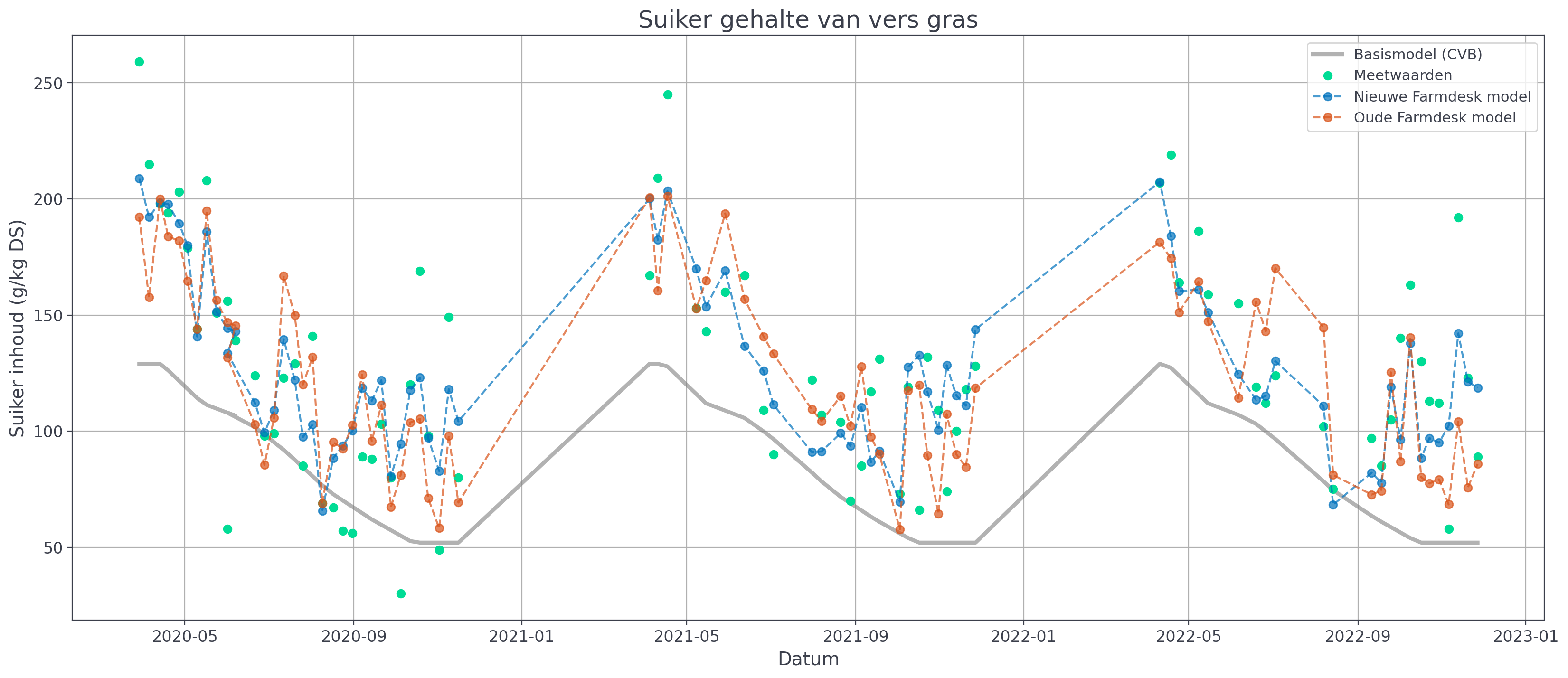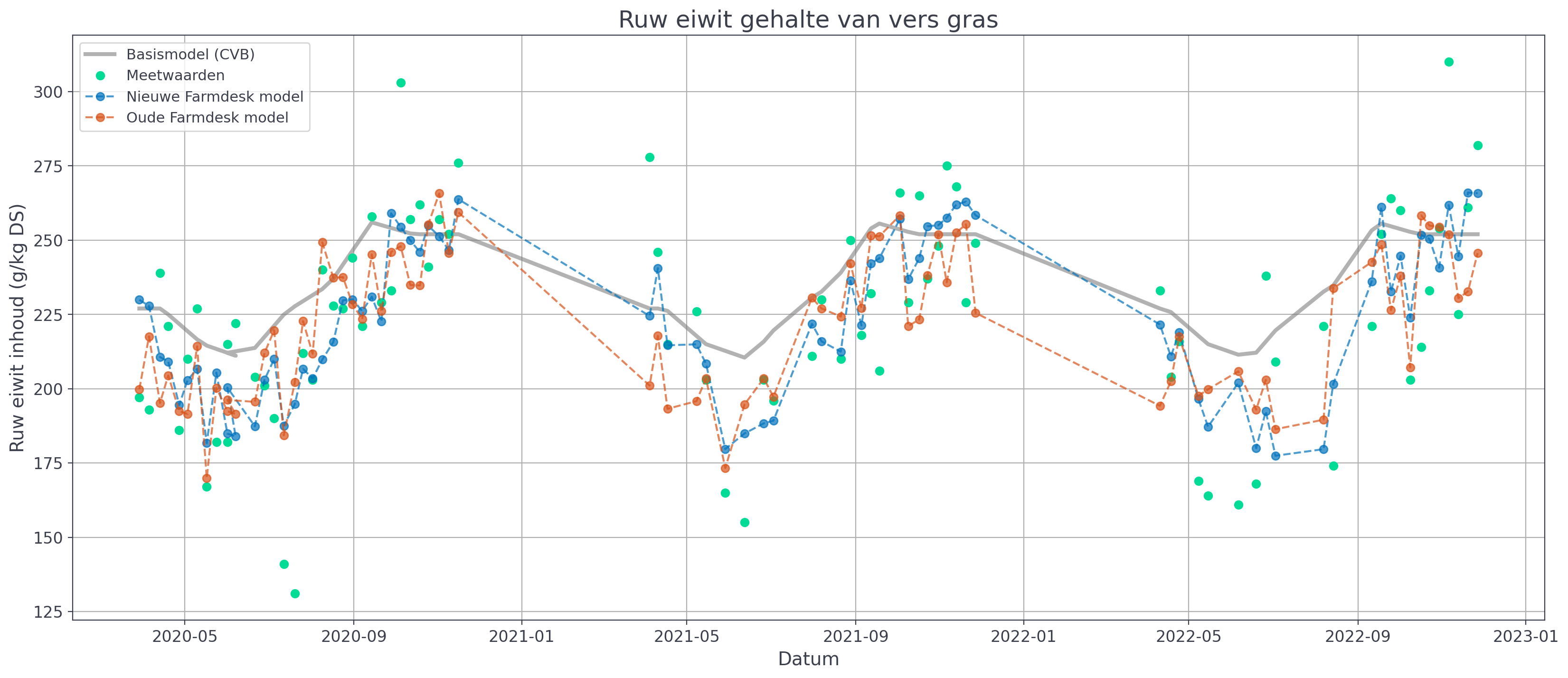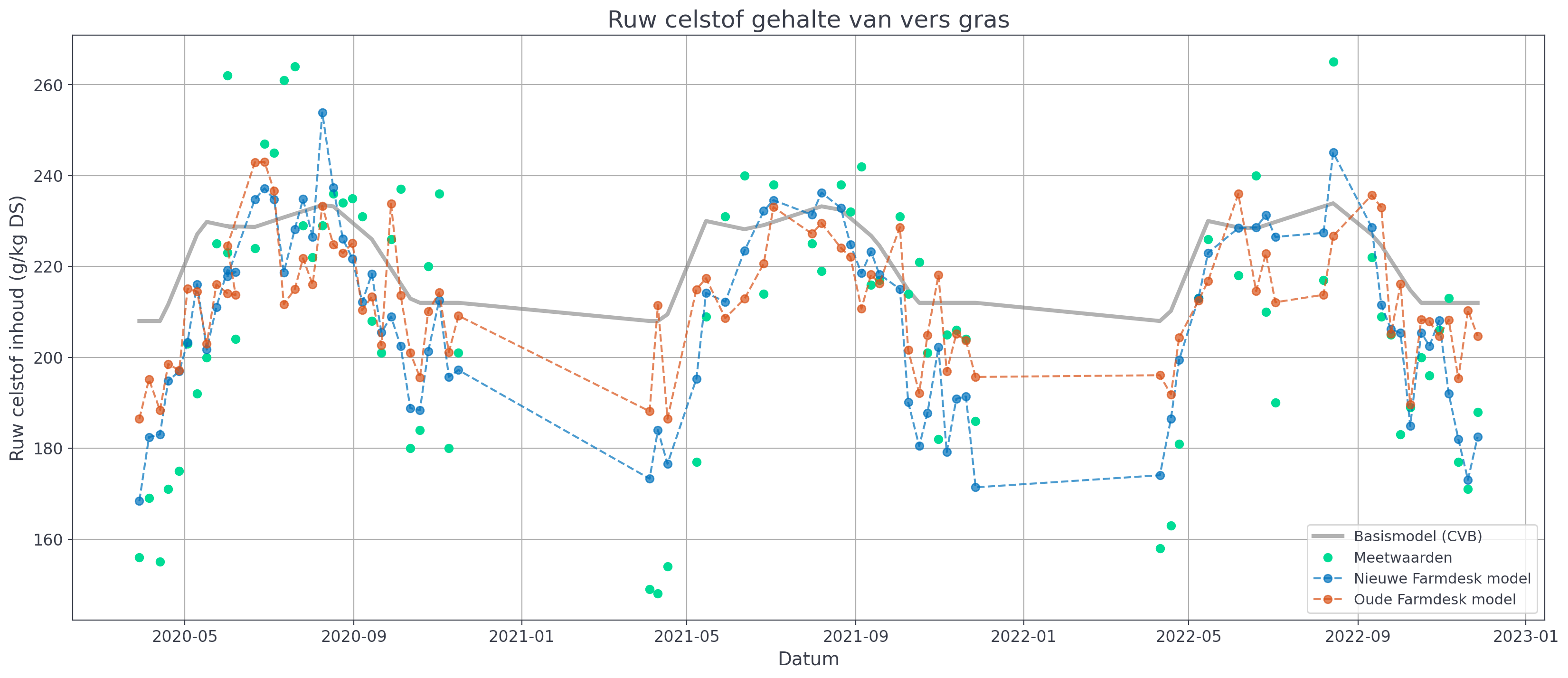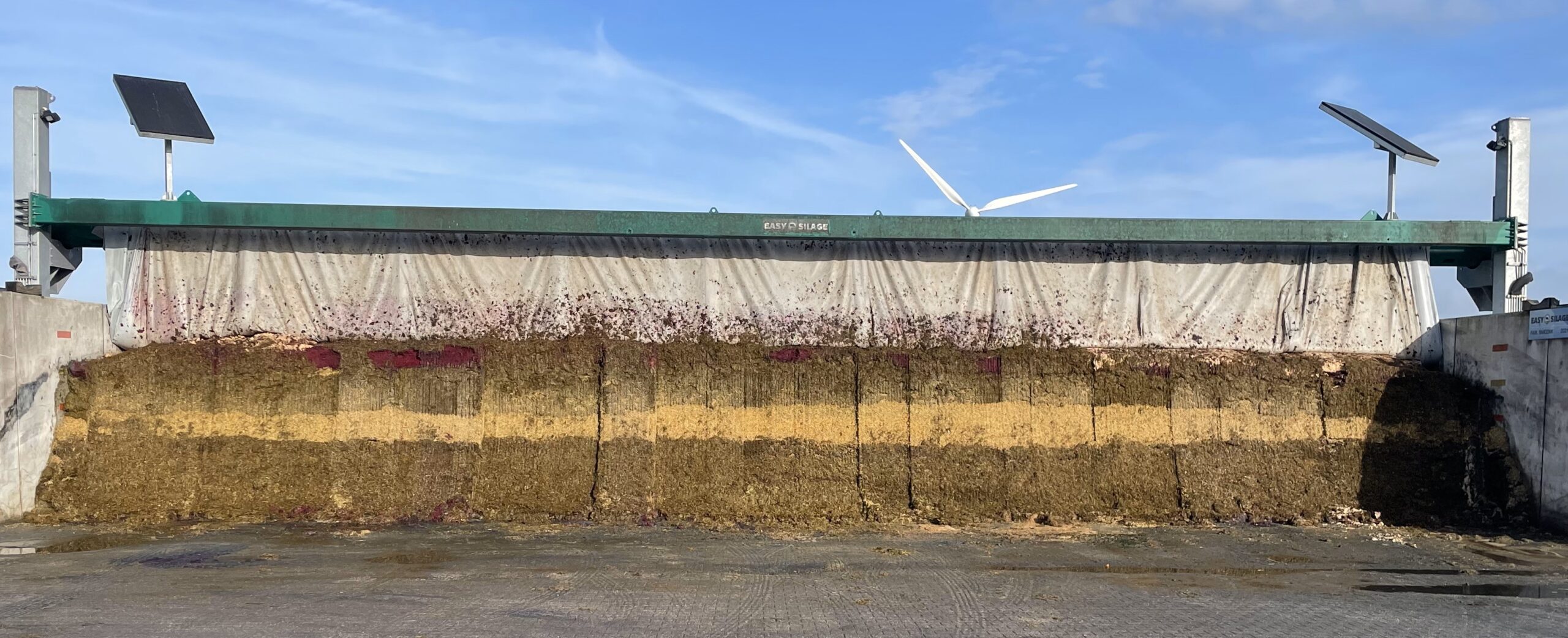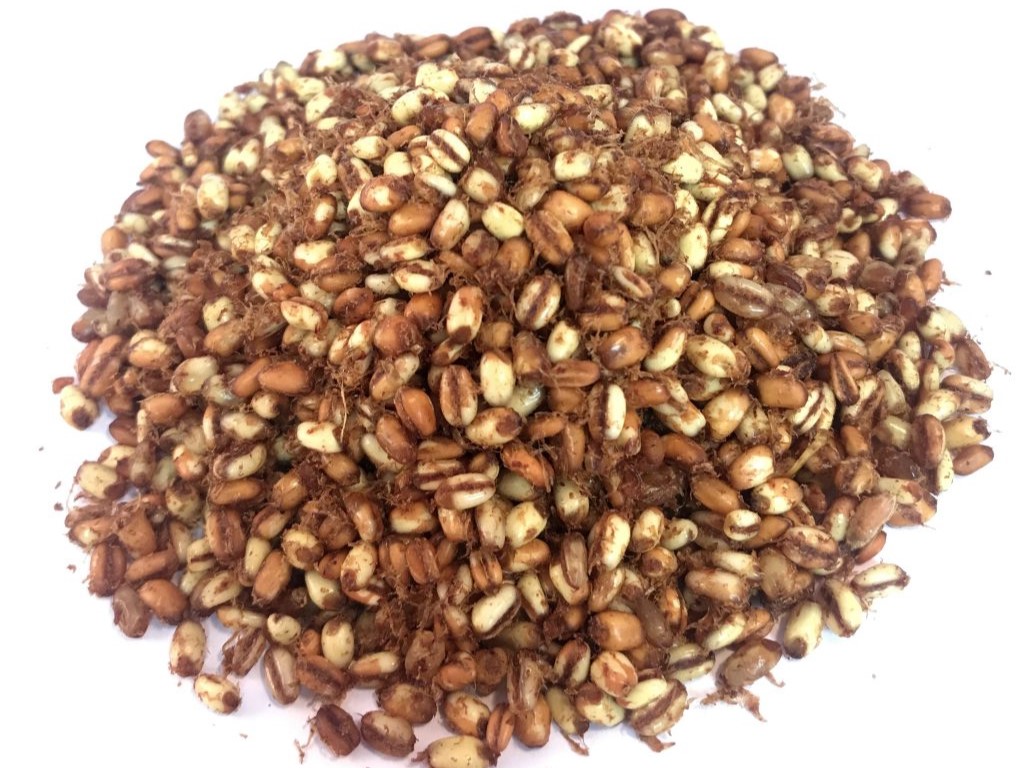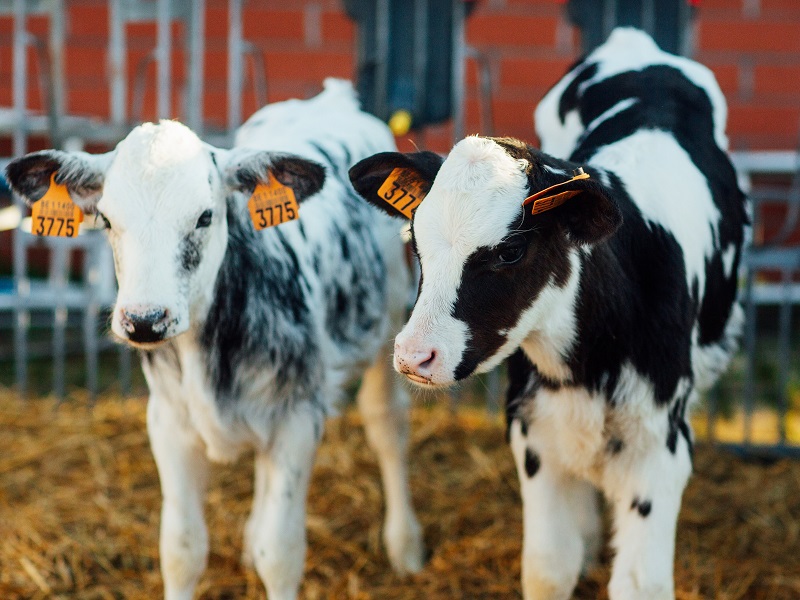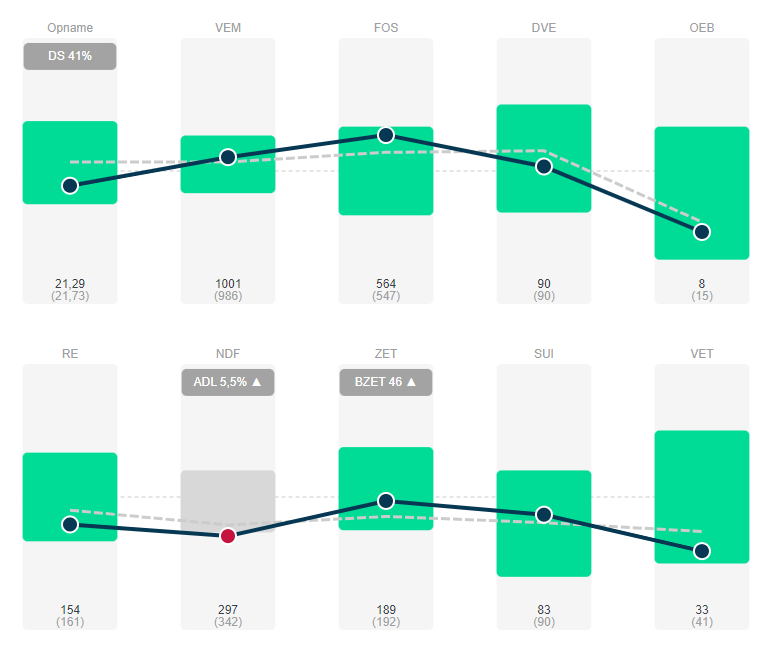In April 2021, the Farmdesk Fresh Grass module was launched. This module makes estimates of the feed values of fresh grass based on a seasonal model with daily corrections on top based on local weather conditions.
The first version of this model was created based on fresh grass analyses from the 2020 crop year. Meanwhile, also the years 2021 and 2022 have passed. Each year is climatically different, so time to update our model again with this new information.
Read our first article with more clarification on the fresh grass module.
Model modifications
The new model includes three improvements over the first version.
- The model was recalibrated with fresh grass analyses and weather and soil data from the years 2021 and 2022 on top of the 2020 data. By using multiple years, the model will score better on average. For example, in 2021 there was a relatively wet summer, with earlier hot/dry summers were.
- In addition, an additional soil parameter was added, namely the soil temperature (in addition to the already used parameters of sunlight, night temperature, maximum temperature, moisture supply, soil moisture and amount of precipitation during the past five days).
- As a third extension, the ADL prefix added in the model.
Results of the new model
The two graphs below show the course of VEM and DVE over the 2020 - 2021 - 2022 seasons. The gray line shows the standard CVB curve (the same each year). The green points are effective readings from a Farmdesk test farm. It is clearly visible that at certain times the measured values deviate significantly from the standard curve.
The red dots show the old Farmdesk model, the blue dots the reworked new model. It is clear that the new model tracks for example the increase at the beginning and at the end of the grass season better.
In addition to the calculated parameters VEM and DVE, it is also interesting to look at the hard key figures sugar, crude protein and crude fiber.
For sugar the new model in 50% of the measurement points deviates less than 15 g/kg DS from the measured value (on an average value of 120 g/kg DS for this farm), where in the old model there is still a deviation of 22 g/kg DS. Note also that for this test farm the measured values and the Farmdesk model for sugar are systematically higher than the CVB curve.
The new model also scores better on average for crude protein, crude fiber and other key figures (not shown).
"In summary, the fresh grass module in Farmdesk is a unique tool to keep a grip on your technical and economic feed management during the grazing season."
Jef Aernouts
